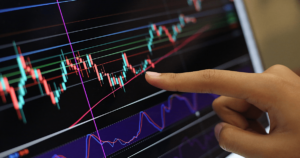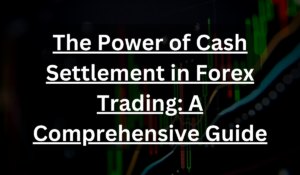Introduction
Trading forex can be an exciting and potentially profitable endeavor, but it also comes with inherent risks. The forex market is known for its volatility and unpredictable swings, which can lead to significant losses if not managed properly. That’s where risk management tools come into play. In this comprehensive guide, we will delve into various risk management tools and strategies that can help traders mitigate potential losses and protect their capital.
The Importance of Risk Management in Forex Trading
Before we dive into specific risk management tools, it’s important to understand why risk management is crucial in forex trading. Risk management is the process of identifying, assessing, and prioritizing risks, and then taking appropriate actions to minimize or mitigate them. In the context of forex trading, effective risk management can help traders protect their trading capital, preserve their profits, and maintain long-term success in the market.
Stop Loss and Take Profit Orders
One of the fundamental risk management tools in forex trading is the use of stop loss and take profit orders. These orders allow traders to automatically close their positions at predefined price levels, helping them limit potential losses and secure profits.
A stop loss order is placed below the entry point for long positions and above the entry point for short positions. If the market moves against the trader’s position and reaches the stop loss level, the trade is automatically closed, preventing further losses. It’s important to set the stop loss level at a reasonable distance from the entry point to allow for normal market fluctuations while still providing adequate protection.
On the other hand, a take profit order is placed above the entry point for long positions and below the entry point for short positions. When the market reaches the take profit level, the trade is closed, and the trader locks in their profits. Take profit orders are especially useful for capitalizing on favorable market movements and ensuring traders don’t miss out on potential gains.
Risk-Reward Ratio
The risk-reward ratio is another essential tool for managing risk in forex trading. It’s a ratio that compares the potential reward of a trade to the potential risk. A risk-reward ratio of 1:3, for example, means that the trader aims to make three times the potential profit compared to the potential loss.
By using a risk-reward ratio, traders can assess the potential profitability of a trade before entering it. A higher risk-reward ratio indicates a potentially more profitable trade, while a lower ratio suggests a trade with a smaller profit potential. It’s important to note that the risk-reward ratio should align with the trader’s overall trading strategy and risk tolerance.
Position Sizing
Proper position sizing is a critical aspect of risk management in forex trading. It involves determining the appropriate position size for each trade based on the trader’s risk tolerance and account size. Position sizing helps control the amount of capital at risk in each trade, ensuring that losses are manageable and within acceptable limits.
To calculate the position size, traders need to consider the amount of capital they are willing to risk on a trade, the distance to the stop loss level, and the pip value of the currency pair being traded. By using position sizing techniques, such as the percentage risk method or the fixed dollar risk method, traders can determine the appropriate lot size or contract size for their trades.
Risk Management Indicators
In addition to stop loss orders, take profit orders, and risk-reward ratios, there are various risk management indicators that traders can utilize to enhance their risk management strategies. These indicators provide valuable insights into market conditions and help traders make informed decisions regarding their trades.
One commonly used risk management indicator is the Average True Range (ATR). The ATR measures the volatility of a currency pair and can help traders determine suitable stop loss levels by indicating the average price range over a specific period. By setting stop loss levels based on the ATR, traders can adjust their risk exposure according to the market’s volatility.
Another useful risk management indicator is Bollinger Bands. Bollinger Bands consist of an upper band, a lower band, and a middle band (which is usually a simple moving average). The outer bands represent two standard deviations from the middle band and can serve as dynamic guides for assessing the potential range of price movements. Traders can use Bollinger Bands to set stop loss levels or identify potential reversal points.
Fibonacci Ratio Lines are also popular risk management tools. These lines are drawn based on Fibonacci retracement levels and can help traders identify potential support and resistance levels. By placing stop loss levels or take profit levels near these Fibonacci levels, traders can effectively manage their risk and optimize their trade entries and exits.
Advanced Risk Management Strategies
Beyond the basic risk management tools discussed above, there are more advanced strategies that experienced traders employ to further enhance their risk management.
One such strategy is diversification. Diversifying a trading portfolio involves spreading the risk across multiple currency pairs or other financial instruments. By diversifying, traders reduce theirexposure to any single trade or currency pair, which can help mitigate losses if one position performs poorly. Diversification can be achieved by trading different currency pairs, incorporating other asset classes like commodities or indices, or even diversifying across different trading strategies.
Another advanced risk management strategy is hedging. Hedging involves opening opposing positions in correlated currency pairs or using derivative instruments such as options to offset potential losses. For example, if a trader has a long position in a currency pair, they can open a short position in a correlated pair to reduce the overall risk exposure. Hedging can be a complex strategy and requires a thorough understanding of the market dynamics and hedging instruments.
Common Queries about Risk Management in Forex Trading
Q1: Can risk management eliminate all losses in forex trading?
A1: While risk management is crucial for minimizing losses, it cannot completely eliminate losses in forex trading. The market is inherently unpredictable, and even the most well-managed trades can result in losses. Risk management aims to control and mitigate losses, but traders should always be prepared for potential losses as part of their trading strategy.
Q2: How do I determine the appropriate risk-reward ratio for my trades?
A2: The appropriate risk-reward ratio depends on your trading strategy, risk tolerance, and market conditions. Generally, a higher risk-reward ratio can lead to more significant profits, but it may also come with lower win rates. It’s essential to strike a balance that aligns with your trading goals and risk appetite. Backtesting and analyzing historical data can help you evaluate different risk-reward ratios and find the optimal ratio for your trading style.
Q3: Should I use the same position size for every trade?
A3: The position size for each trade should be determined based on your risk tolerance and account size. It’s generally recommended to risk a small percentage of your trading capital on each trade, typically between 1-2%. By using a consistent position sizing approach, you ensure that your losses are controlled and don’t disproportionately affect your overall trading account.
Q4: Are there any risk management tools or strategies specific to volatile market conditions?
A4: Volatile market conditions require heightened risk management measures. In addition to using wider stop loss levels to account for increased price fluctuations, traders can consider employing volatility-based indicators such as the Average True Range (ATR) to adjust their risk exposure. Additionally, scaling down position sizes or avoiding trades during excessively volatile periods can help manage risk effectively.
Key Takeaways
- Risk management is essential in forex trading to protect capital and maintain long-term success.
- Stop loss and take profit orders are crucial tools for limiting losses and securing profits.
- The risk-reward ratio helps evaluate the potential profitability of a trade before entering it.
- Proper position sizing ensures that losses are manageable and within acceptable limits.
- Risk management indicators, such as ATR, Bollinger Bands, and Fibonacci Ratio Lines, provide insights into market conditions and help set appropriate risk levels.
- Advanced risk management strategies include diversification and hedging.
- Risk management cannot eliminate all losses, but it helps control and mitigate them.
- The appropriate risk-reward ratio, position size, and risk management approach depend on individual trading goals and risk tolerance.
Remember, successful forex trading requires a combination of skill, knowledge, and effective risk management. Continuously educate yourself, practice on demo accounts, and refine your risk management strategies to increase your chances of long-term profitability in the forex market.








